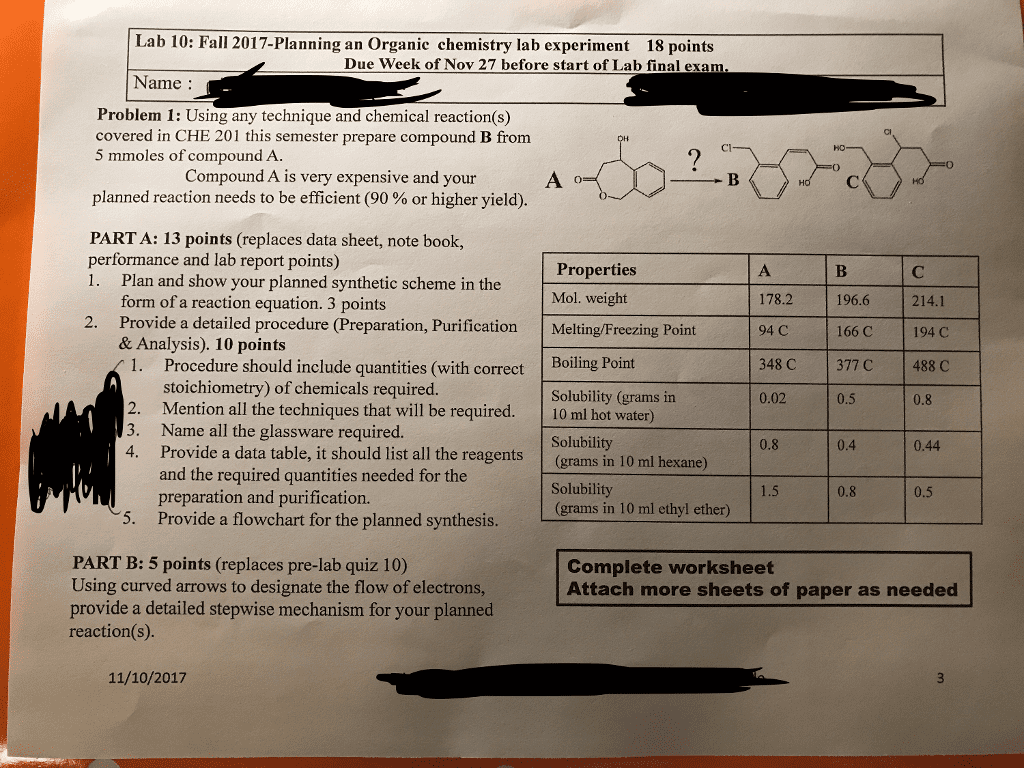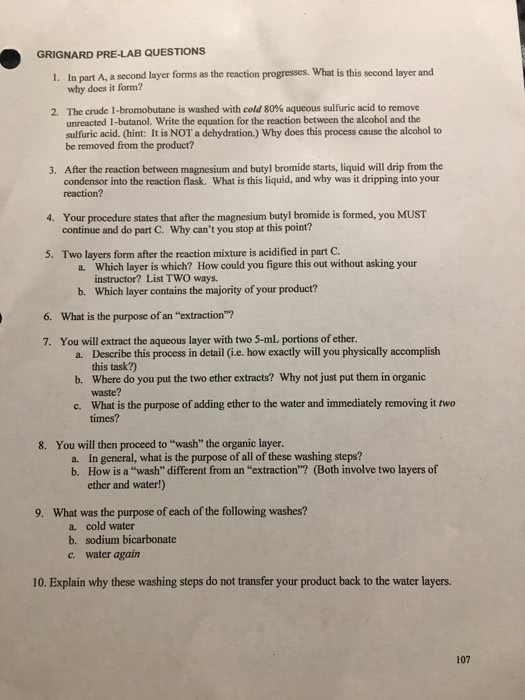CHEM 245 Lecture Notes - Lecture 3: Organic Compound, Infrared Spectroscopy, Bromobenzene
49 views4 pages
8 Mar 2016
School
Department
Course
Professor
Document Summary
Fall 2015: experiment 3-synthesis of triphenyl methanol (80) Report appearance (typed, on time, formatted, presentable, complete) Triphenyl methanol was produced using a grignard reagent. The grignard reagent was formed when magnesium was added to the bromobenzene in ether. 0. 83 grams of triphenyl methanol was collected with a percent yield of 80%. Bromobenzene was the limiting reagent in this synthesis because of the smaller molar quantity (0. 00401 moles bromobenzene). The melting point of the final product was 161 - 1630c. The purpose of this experiment was to form triphenyl methanol using a grignard reagent. Grignard reactant was produced from magnesium and bromobenzene that was then reacted to benzophenone. It was critical to keep the reaction dry to enable to grignard reagent to work properly. The melting point of the final product, triphenyl methanol, was measured. *literature melting points and boiling points were taken from jean-claude bradley open melting point dataset and oxford university chemical.
Get access
Grade+20% off
$8 USD/m$10 USD/m
Billed $96 USD annually

Homework Help
Study Guides
Textbook Solutions
Class Notes
Textbook Notes
Booster Class
40 Verified Answers
Class+
$8 USD/m
Billed $96 USD annually

Homework Help
Study Guides
Textbook Solutions
Class Notes
Textbook Notes
Booster Class
30 Verified Answers
Related textbook solutions
Chemistry: Structure and Properties
2 Edition,
Tro
ISBN: 9780134293936
Basic Chemistry
5 Edition,
Timberlake
ISBN: 9780134138046
Principles of Chemistry Molecular Approach
4th Edition,
Tro
ISBN: 9780134112831
Principles of Chemistry Molecular Approach
3rd Edition, 2014
Tro
ISBN: 9780321971944
Chemistry: Structure and Properties
2nd Edition,
Tro
ISBN: 9780134293936
Chemistry: A Molecular Approach
3rd Edition,
Tro
ISBN: 9780321809247
Chemistry: A Molecular Approach
5th Edition,
Tro
ISBN: 9780134874371
Principles of Chemistry: A Molecular Approach
4th Edition,
Tro
ISBN: 9780134895741
Chemistry: The Central Science
14th Edition, 2017
Brown
ISBN: 9780134414232

